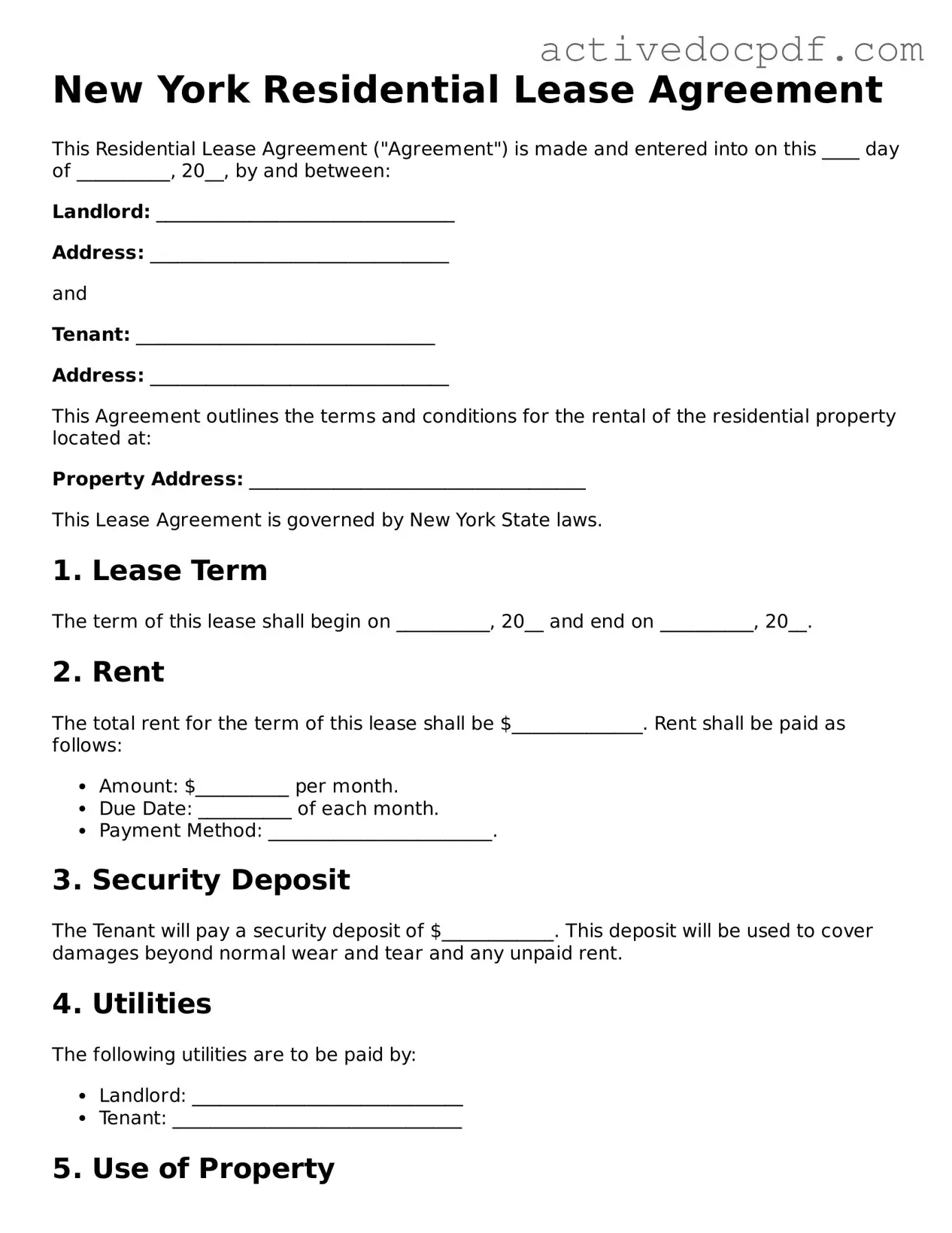What is a New York Residential Lease Agreement?
A New York Residential Lease Agreement is a legally binding document that outlines the terms and conditions between a landlord and a tenant for renting residential property. This agreement specifies the rights and responsibilities of both parties, including rental payments, lease duration, maintenance obligations, and rules regarding the use of the property.
What should be included in the lease agreement?
Essential elements of a New York Residential Lease Agreement typically include:
-
The names of the landlord and tenant
-
The address of the rental property
-
The rental amount and payment due dates
-
The length of the lease term
-
Security deposit details
-
Maintenance and repair responsibilities
-
Rules regarding pets, smoking, and guests
-
Termination and renewal clauses
How long does a residential lease last?
The duration of a residential lease can vary. Most leases are typically for one year, but they can also be month-to-month or for a shorter or longer period, depending on the agreement between the landlord and tenant. It is important to clearly specify the lease term in the agreement.
Can a landlord increase the rent during the lease term?
Generally, a landlord cannot increase the rent during the lease term unless the lease agreement specifically allows for it. Rent increases are usually only permitted at the time of lease renewal or as specified in the lease. Always review the lease terms to understand any conditions regarding rent adjustments.
What happens if a tenant wants to break the lease early?
If a tenant wishes to break the lease early, they should first review the lease agreement for any specific terms related to early termination. Many leases include a clause that outlines the penalties or notice required for breaking the lease. It is advisable for tenants to communicate with the landlord to discuss options, which may include subletting or paying a fee.
Is a written lease agreement necessary?
While a verbal agreement may be legally binding in some cases, a written lease agreement is highly recommended. A written document provides clear evidence of the terms agreed upon and helps prevent misunderstandings between the landlord and tenant. It also offers legal protection for both parties in case of disputes.
